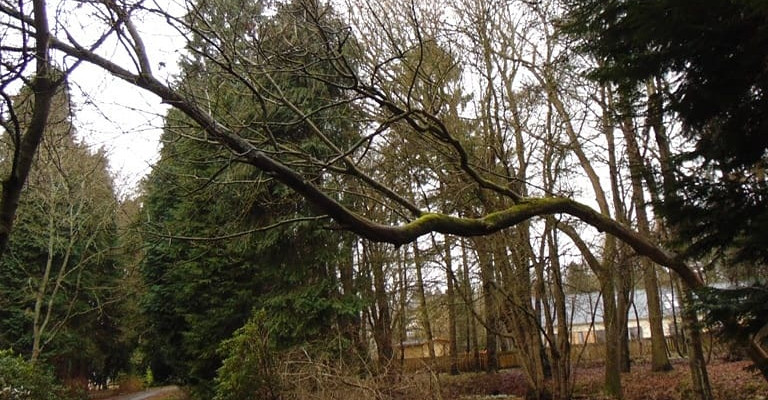
07 May Understanding Tree Lopping: When Is It Necessary and Its Impact on Tree Health
Imagine a towering tree in your garden with branches reaching towards the sky, creating a picturesque scene. But as seasons pass, you notice some branches encroaching on your home’s roof. Suddenly, the scenic image is overshadowed by concerns for safety.
This is where the practice of tree lopping comes into play. In this blog, we’ll dive into the art of tree lopping, exploring when it’s necessary and its implications for tree health. As professional tree surgeons, we understand the delicate balance between tree care and preservation.
Join us as we tackle the nuances of tree lopping and how it impacts your green spaces. Whether you’re in Perth or beyond, count on us to provide expert guidance for all your tree maintenance needs!
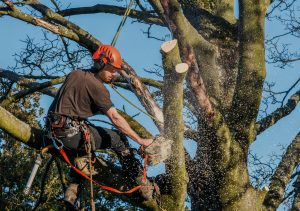
Defining tree lopping
Tree lopping is a tree management practice that involves the strategic removal of large sections of a tree’s crown or branches. This method is primarily aimed at reducing the size of the tree, modifying its shape, or eliminating obstructive growth.
Tree lopping is often necessary to address safety concerns, such as preventing branches from encroaching on power lines or posing hazards to nearby structures. However, it’s crucial to understand that tree lopping should be approached with caution and expertise. Improper lopping techniques can inflict severe damage to the tree’s health and structural integrity.
How does it differ with tree pruning?
While both tree lopping and pruning involve the removal of tree branches, their approaches and objectives diverge significantly. Pruning adheres to industry standards and aims to improve tree health, structure, and aesthetics by selectively removing specific branches.
On the other hand, tree lopping involves more drastic cutting, often disregarding the tree’s natural form and health considerations.
As a result, pruning is regarded as a preferred method for maintaining tree health and longevity, while lopping is viewed with caution due to its potential negative impacts on trees.
Situations where tree lopping is necessary
Tree lopping is a controversial practice, often frowned upon due to its potential harm to tree health. However, there are specific situations where tree lopping may be deemed necessary.
Let’s explore these scenarios and shed light on when tree lopping might be justified:
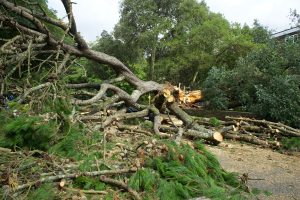
- Hazardous branches: When trees develop large, overhanging branches that pose an imminent risk to property or safety, tree lopping may be necessary. These branches may be diseased, damaged, or structurally compromised, making them prone to falling and causing harm.
- Clearance for utilities: In urban environments, trees may interfere with overhead utility lines, posing a risk of electrical hazards or service disruptions. In such cases, selective tree lopping may be required to maintain safe clearance around utility infrastructure.
- Clearance for structures: When trees invade buildings, fences, or other structures, tree lopping may be necessary to prevent damage or obstruction. This may involve reducing the size of the tree’s canopy to create sufficient clearance.
- Emergency situations: During emergencies such as storms or natural disasters, trees may sustain severe damage, leading to hazardous conditions. In this case, prompt tree lopping may be necessary to mitigate immediate risks and ensure safety.
Potential impact on tree health
While tree lopping may seem like a quick fix for various tree-related issues, it can have significant implications for the long-term health and structural integrity of trees. Here are some of the potential consequences of tree lopping on tree health and vitality:
- Wounding and stress: Tree lopping involves the indiscriminate removal of branches, often leaving large wounds on the tree. These wounds expose the tree to pathogens, pests, and decay, which can cause infection and weaken the tree’s defence mechanisms. Additionally, the abrupt removal of foliage can induce stress on the tree, affecting its ability to photosynthesise and gather essential nutrients.
- Regrowth issues: After tree lopping, trees may respond by producing vigorous, fast-growing shoots known as epicormic growth. While this may seem beneficial, such regrowth tends to be structurally weak and prone to breakage. Moreover, the rapid growth can deplete the tree’s energy reserves that leaves it vulnerable to further stress and decline.
- Structural instability: Repeated or improper tree lopping can result in the development of structurally unsound trees. The removal of lateral branches disrupts the natural balance and distribution of weight within the tree. This can lead to an imbalance that increases the risk of limb failure and uprooting. Over time, lopped trees may become increasingly unstable and pose hazards to nearby structures and individuals.
Why Perthshire residents should proceed with caution
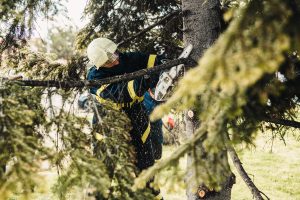
Tree lopping may seem like a convenient solution for addressing tree-related concerns. However, Perthshire residents should exercise caution when considering this practice. Tree lopping can have significant implications for tree health, safety, and overall ecosystem balance. Let’s explore why it’s essential for residents to approach tree lopping with careful consideration and seek professional advice when necessary.
- Potential legal issues: Tree lopping may be subject to regulations and local ordinances aimed at protecting trees and preserving green spaces. Perthshire residents should familiarise themselves with local tree preservation laws and consult with qualified arborists to ensure compliance with regulations.
- Risk of damage: Improperly executed tree lopping can cause irreversible damage to trees, compromising their structural integrity and longevity. Perthshire residents should be aware that amateur tree lopping practices can lead to weakened trees and potential hazards. Choosing reputable tree care professionals like TTS ensures that tree maintenance is conducted safely and in accordance with industry best practices.
- Impact on tree health and ecosystem: By indiscriminately removing branches, tree lopping diminishes the tree’s ability to photosynthesise, store nutrients, and support wildlife habitats. Perthshire residents should consider the broader ecological implications of tree lopping and prioritise sustainable tree care practices.
TTS Tree Surgery’s approach to tree lopping
At TTS, we understand the importance of responsible tree care practices, including tree lopping. Our approach to tree lopping is guided by a commitment to tree health, safety, and environmental sustainability.

Our approach:
Comprehensive assessment
Before initiating any tree lopping project, our team conducts a thorough assessment of the tree’s condition, health, and structural integrity. By evaluating important factors, we can determine the most appropriate course of action to address specific concerns while minimising its negative impacts.
Professional execution
Our team of experienced arborists utilises industry-leading equipment and techniques to execute tree lopping with precision and care. We adhere to the highest standards of tree care to minimise stress on trees and maximise recovery potential. Additionally, we prioritise safety at every stage of the process, ensuring minimal disruption to surrounding landscapes and structures.
Environmental sustainability
At TTS, we are committed to environmental sustainability in all our tree care practices, including tree lopping. We strive to minimise our environmental footprint by responsibly managing tree waste, promoting biodiversity, and advocating for the preservation of green spaces in Perthshire.
Ready to give your trees the care they deserve? Contact TTS Tree Surgery today to schedule a consultation with our team of expert arborists. Let us help you safeguard the health, beauty, and longevity of your trees with our professional tree lopping services in Perthshire.
